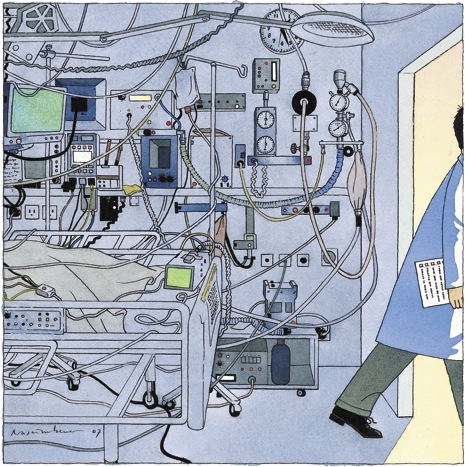 One of my favourite fellow bloggers, medical photographer Øystein Horgmo, has just written about how he was recently invited to document a family taking farewell of a young father in an intensive care unit.
One of my favourite fellow bloggers, medical photographer Øystein Horgmo, has just written about how he was recently invited to document a family taking farewell of a young father in an intensive care unit.
It’s a moving story. But what actually caught my interest was this painting (by medical doctor Joseph Dwaihy and artist Sara Dykstra), which Øystein uses the illustrate the story.
Based on a photograph from the Dartmouth-Hitchcock Medical Center’s first intensive care unit, circa 1955 (read more here), the painting is reminiscient of Norman Rockwell-realism. Like Rockwell, Dwaihy and Dykstra portray people in mundane situations. It’s people who play the primary role. The instruments are background props.
Compare Dwaihy and Dykstra’s painting of the 1955 ICU motif with a photo of a contemporary ICU unit. Today, there are indeed still people (a patient, a doctor, maybe a relative) around—but they seem to play a secondary role to the instruments.
In the cartoon below, the central role of instruments in an ICU is emphasized. The patient is invisible, the doctor is on his way out. Here the ICU is all about the instruments:

medical scientific instrumentsmedical technologyMedicinhistorievisualization
The intensive care unit on display
One of my favourite fellow bloggers, medical photographer Øystein Horgmo, has just written about how he was recently invited to document a family taking farewell of a young father in an intensive care unit. It’s a moving story. But what actually caught my interest was this painting (by medical doctor Joseph Dwaihy and artist Sara Dykstra), which Øystein uses the illustrate the story. Based on a photograph from the […]


